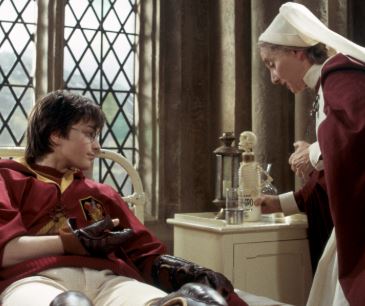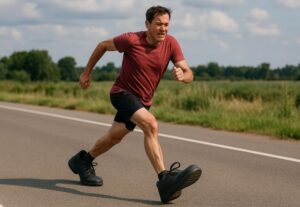Share this post
Dr. Jason Pirozzolo: Insights on Bone Regrowth and Recovery Inspired by Harry Potter’s Skele-Gro Experience
Harry Potter’s botched healing spell incident in The Chamber of Secrets remains one of the most vivid examples of magical medicine gone wrong. Losing all the bones in his arm after Professor Lockhart’s spell mishap and enduring the painful regrowth process with Skele-Gro potion highlights the risks and challenges of bone regeneration. While we live far from the magical realm, the story invites intriguing parallels to real-world bone regeneration and orthopedic recovery. Experts like Dr. Jason Pirozzolo, a renowned physician specializing in sports medicine and orthopedic care, shed light on how modern medicine approaches such challenges.
Bone loss or injury, while not caused by spells, is a significant issue in both athletic and everyday scenarios. “Most importantly, bones are living tissues that respond to trauma and repair themselves under the right conditions,” explains Dr. Jason Pirozzolo. “Severe cases, like fractures or bone loss due to conditions like osteoporosis, require careful intervention to ensure proper healing.” Just as Harry endured discomfort during the regrowth process, patients today often face pain and long recovery periods during bone regeneration.
Skele-Gro may be fictional, but advances in regenerative medicine provide similar hope for patients with complex injuries. Techniques like bone grafting and synthetic bone substitutes are common in reconstructive surgery. “Bone grafts, whether sourced from the patient or a donor, create scaffolding that supports new bone growth,” notes Dr. Jason Pirozzolo. “These methods mimic the natural healing process, making them invaluable for severe fractures or bone loss.”
In Harry’s case, the regrowth process was particularly excruciating, reflecting the challenges of stimulating rapid tissue regeneration. Dr. Pirozzolo explains that real-life recovery can also be uncomfortable, particularly when procedures like bone grafting or advanced biologics are involved. However, pain management strategies and gradual rehabilitation make these treatments more tolerable. “Modern pain management techniques ensure that recovery is as comfortable as possible while prioritizing effective healing,” he adds.
Besides advanced procedures, nutrition and physical therapy play critical roles in bone recovery. A diet rich in calcium, vitamin D, and protein supports bone health and repair. Exercises targeting strength and flexibility also promote better outcomes. “Rehabilitation is just as crucial as surgical intervention,” says Dr. Jason Pirozzolo. “Patients must work to rebuild strength and maintain proper joint alignment to prevent complications.”
Preventing bone injuries in the first place is an essential aspect of orthopedic care. Activities that strengthen bones, such as weight-bearing exercises, go a long way in reducing the risk of fractures. Adequate nutrition and addressing underlying conditions like osteoporosis further reduce risks. “Prevention is always better than treatment,” emphasizes Dr. Jason Pirozzolo. For athletes and active individuals, proper warm-ups, protective gear, and conditioning minimize the likelihood of injury.
Harry’s ordeal also highlights the importance of expertise in recovery. Just as Madam Pomfrey’s knowledge of magical medicine was essential in regrowing his bones, having a qualified medical professional is vital for successful outcomes in real life. Dr. Jason Pirozzolo advises, “Seeking prompt care from a specialist ensures the injury is treated correctly from the start. Delays or improper treatment can lead to long-term complications.”
The psychological aspect of recovery deserves attention as well. Patients recovering from significant bone injuries often face challenges beyond physical pain. Fear of reinjury, changes in mobility, and the mental toll of a prolonged recovery can all affect outcomes. “Mental resilience is critical,” says Dr. Jason Pirozzolo. “A strong support system and clear goals help patients stay motivated and committed to their recovery.”
Modern medicine has come a long way from fictional potions like Skele-Gro. Cutting-edge technologies, including stem cell therapy and 3D-printed implants, represent the future of bone regeneration. These advancements promise faster recovery times and better outcomes for patients with complex injuries. “The possibilities in regenerative medicine are incredibly exciting,” notes Dr. Jason Pirozzolo. “We’re constantly finding new ways to improve healing and restore function.”
Harry Potter’s experience with bone regrowth may have been exaggerated for dramatic effect, but it reminds us of the complexity of healing. The journey from injury to recovery involves a blend of expert care, patient effort, and the right tools. “Recovery is never easy, but with the right approach, it’s always possible,” says Dr. Jason Pirozzolo.
For more insights into injury prevention, recovery strategies, and the latest advancements in orthopedic medicine, follow Dr. Jason Pirozzolo. His expertise provides practical advice for anyone seeking to maintain mobility and achieve a pain-free life. You may also contact a Key West orthopedic clinic for more information.




















